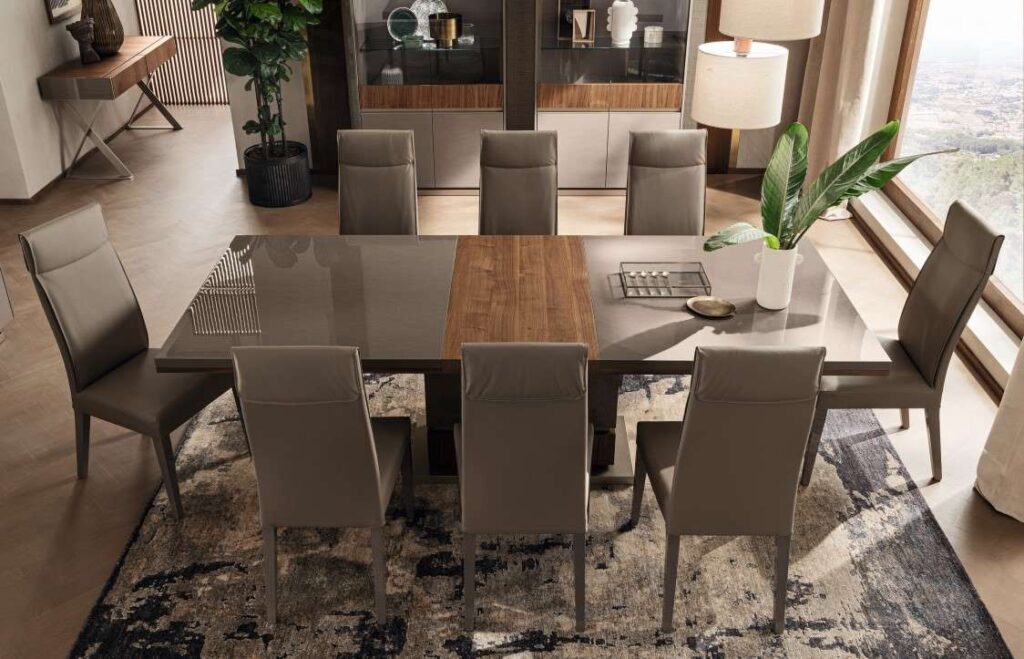

Whether you’re in the market for a new occasional table, desk, or dining table, or wondering how to care for your current one, being familiar with the types of tabletop materials and the care they need is important to ensure your function and durability needs are met.
“When considering the purchase of a new table, of course the first step is to consider the size of your space and how many people you need to sit,” says Dave Mason, a sales associate at Copenhagen Tucson. “But the next step is to determine how your table will be used, as well as your aesthetic needs. So, it’s important to be aware of the surface material the table is made from.”
We talked with Mason to bring you some quick tips on caring for different tabletop materials, so you can make sure your table lasts longer while meeting all of your aesthetic and function needs.
Though you might be tempted to purchase the first beautiful table you see, taking a moment to think about how the table will be used will save you time and ensure that you invest in the materials best suited to your lifestyle. “A family of five with young kids who might race toy cars across the table may need a surface that is easy to clean and more durable,” Mason starts. “Alternatively, a retired couple who tend to take good care of their furniture can afford to have a wider variety of options.”
“Wood has always been a very popular option due to its durability, natural beauty, and ability to blend in with a variety of design styles,” Mason explains.
Built to last, solid wood has an effortlessly classic look that adds warmth and is relatively easy to clean. And from the timeless walnut of the Frank Desk to the sustainable amber bamboo of the Cisco Dining Table, solid wood proves its versatility.
Melamine is a wood-look material while veneer is a wood type – and both are very easy to clean. With the rich look and versatility of solid wood, veneer and melamine tables are popular for a good reason, and often come in more affordable options.
“Ceramic offers great durability, cleanability, and an eye-catching design,” Mason says. He particularly likes the Tyron Keramik dining table – “It has this beautiful ceramic top that is elegant yet easy to clean. And when you unveil the self-storing extension leaves, the veining in the ceramic lines up perfectly for a magnificent finish.”
If you want something in marble look, color, or with patterning and that’s easy-care, ceramic is a great choice.
Marble is a timeless material that has natural elegance and beauty and can last for a long time when properly cared for. Its non-porous nature makes it moisture-resistant, and most marble tables have a layer of wax or polish for additional protection. It’s important to know whether the marble of your table is sealed or not, as the surface can be quite vulnerable otherwise.
Glass, for all its visual delicacy, has its design and durability advantages – “Glass makes for a nice, modern look and an easily cleanable surface. It’s great for smaller areas to make the space appear bigger and lighten the look,” Mason explains. “I like the Romeo Condo Sized dining table because the glass leaves are easy to use and allow you to see the sculptural base underneath.”
Glass’s sleek design allows it to complement most furniture and accessories – highlighting the beauty of the items around it. Mason stresses again the importance of considering your household, “Glass can be scratched of course, so it’s not for everyone. But you’ll never have to worry about a permanent stain.”
Fenix, made from paper and thermosetting resins, is the new kid on the block but no less qualified as a tabletop material. Fenix tabletops are low-maintenance, carbon-neutral, and have a sleek, modern look; ideal for any kind of household. Skovby of Denmark offers Fenix dining tables like the Jones that are worry-free and multifunctional.
Tabletops are more than their visual surface – their durability, cleanability, and overall structure affects how you use them and for how long. Knowing how to care for your table can set up your space for success, from cultivating the right atmosphere to supporting your function needs. For more furniture care advice, check out our website here, or visit us in-store for help picking out the right dining table for you.